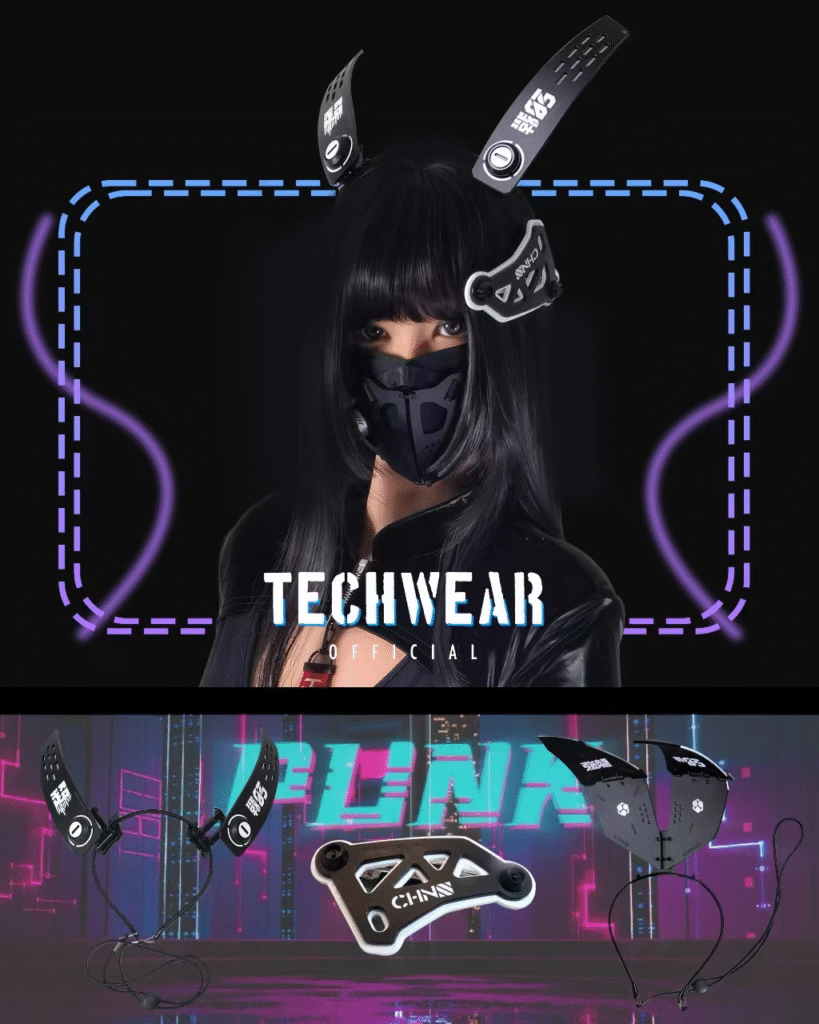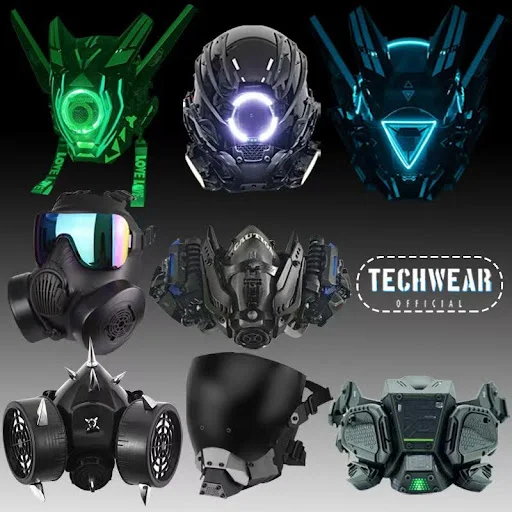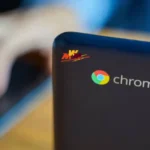You’re walking down a city street on a rainy night, neon signs reflecting off the slick asphalt. The world feels both eerily quiet and intensely alive. Everyone around you wears a mask—not just for health, but to share a statement, hide an identity, or simply survive in a world that sometimes feels more digital than real. Think cyberpunk. Blade Runner. That version of the future once felt distant; now it’s staring you in the face—sometimes, from behind a customizable RGB cyberpunk mask, its multicolored glow pulsing softly in the damp air.
It’s no longer fiction. You’re living in it.
Welcome to the age where cyberpunk masks no longer exist only in books or films, but on the shelves of online marketplaces and street fashion racks. What once symbolized an imagined dystopia has crept into your everyday life—and perhaps, without intending to, you’ve become a part of the story.
Find out how design, culture, and privacy shape the rise of cyberpunk fashion.
From Screen to Skin: The Fiction That Became Us
Cyberpunk was once pure fantasy—a genre carved from the anxiety of technological overload and societal breakdown. It gave us worlds where people wore armor not just for battle, but to breathe, to protest, to disappear. In those neon-drenched futures, masks served a duality of purposes: protection from a polluted world, and a barrier from omnipresent surveillance.
You might have once dismissed those visuals as over the top. You watched characters stalk through rain-soaked streets, their faces obscured by breathing apparatuses or chrome-plated visors, and thought: “Cool, but it’ll never happen.” And yet here you are, choosing between a fabric mask or a sleek black one with built-in filtration, thinking about aesthetics as much as safety. The line has blurred.
The Pandemic Catalyst: A Dystopian Push
When COVID-19 overtook the world, a strange shift happened. Overnight, masks became mandatory. They were no longer accessories for a costume party or comic convention. They were life-saving necessities. Suddenly, cities around the globe began to look uncannily like the settings of cyberpunk stories. Empty streets. People behind shaded lenses. An invisible threat wrapped in an ever-advancing layer of technology.
Maybe you remember the first time you went outside in a mask—how alien or uncomfortable it felt. But over time, our resistance gave way to personalization. Brands began designing masks meant to stand out. Tech companies dove headfirst into next-gen wearables: masks with LED lighting, built-in microphones, air filtration systems, and app connectivity. There were masks glowing in the dark, masks that disguised voices, even masks that synced with a phone to display moods across your face.
In a time of uncertainty, something wild happened: masks transformed from a sign of vulnerability into tools of personal identity and creative armor.
Expression, Anonymity, and the Right to Hide
There’s something emotionally intimate about putting on a mask. It can be empowering. You’ve probably felt that, whether walking through a protest, navigating crowded streets, or simply shielding yourself from yet another phone camera in the sky. When everything seems to be watching, a mask gives you back a little power. It offers anonymity—a kind of psychological refuge.
But more than that, a mask has become a flag, a way for you to say something without saying a word. Perhaps yours has custom patterns or lights up in the dark. Perhaps it’s as subtle as a sharp design that hints at your personality—withdrawn, bold, defiant, mysterious.
There’s deep humanity in all of that. It’s not just about tech. It’s about the texture of a moment in time, the soul behind the steel. You’re not becoming a robot in a cyberpunk world—you’re becoming more human in a world that just feels robotic.
Resistance is Wired In
As surveillance tightens and privacy dissolves into governmental and corporate clouds, resistance grows—not with brute force, but through innovative design. You might’ve heard about “anti-AI” makeup patterns that confuse facial recognition software. Or reflective masks that bounce back infrared scans. People are beginning to take control of how they’re seen—or not seen—by the digital eye. In a way, every unique mask becomes a choice, a boundary, a cry for agency in an ever-watching world.
It’s the same tension central to cyberpunk stories: individuals pushing back, hacking the system using the very tools the system provides.
You’ve likely felt it too—that silent rebellion, even if small. Choosing not to show your face, to avoid auto-tagging, to escape the gaze of crystal-clear security footage. Wearing a mask doesn’t just protect your lungs anymore; it’s like wearing a whisper: “Not today.”

The Tech Keeps Getting Smarter
And here’s the twist—we’re not even close to done. Masks are becoming smarter, faster, more interconnected. Some track your breathing. Others analyze air quality. Some adapt autonomously to filter whatever is in your immediate environment. Imagine masks that connect to AR glasses, showing you health data or real-time translation as you speak. Imagine biometric locks that only respond when you’re fully masked and identified.
This isn’t decades away. Prototypes already exist. You’re standing at the door of an augmented lifestyle—and your mask is the key.
Want to learn more? Our other posts are just a click away!






